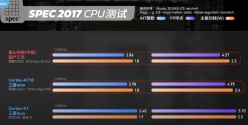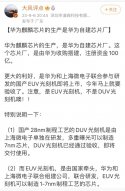500 billion! Suzhou focuses on the development of photonic chips, optical devices, cutting-edge new materials and other fields
Recently, the Suzhou Municipal People's Government issued the "Opinions on Accelerating the Cultivation of Future Industries" (hereinafter referred to as the "Opinions"). The "Opinions" put forward development goals. By 2030, focus on breakthroughs in a number of key core technologies that fill domestic gaps. Future industries will form effective connections with strategic emerging industries and advantageous leading industries. The city's total future industrial output value will exceed 500 billion yuan.
By 2035, one or two future industrial innovation clusters worth hundreds of billions will be formed, leading the country, and the city's total future industrial output value will exceed 1 trillion yuan.
The "Opinions" clarified the key areas of development, combining the scale advantages of Suzhou's four leading industries of electronic information, equipment manufacturing, biomedicine, and advanced materials, relying on photonics, integrated circuits, artificial intelligence, new energy, innovative drugs, and new nanomaterials We will focus on the development of cutting-edge new materials, photonic chips and optical devices, metaverse, hydrogen energy, digital finance, cell and gene diagnosis and treatment, aerospace development, quantum technology and other future industries.
Among them, in the field of cutting-edge new materials: accelerating the industrialization of cutting-edge new materials such as third-generation semiconductors and other wide-bandgap semiconductor materials, 3D printing and powder metallurgy advanced structural materials, high-performance carbon fibers and composite materials, nanomaterials, and high-temperature superconducting materials. process.
Carry out the preparation of single crystal substrates and epitaxial materials such as silicon carbide (SiC) and gallium nitride (GaN), and promote the research and development and industrialization of key components such as wide bandgap semiconductor power electronic devices and radio frequency devices. Strengthen the construction of public instrument platforms for material synthesis and characterization, and plan and research major projects such as extreme nuclear magnetic resonance and medium-energy multi-particle accelerators. Support scientific research institutions to use materials big data to improve materials genome research capabilities and build a cutting-edge new materials industry innovation system that combines virtualization and experimentation. Encourage all types of innovative entities to target downstream needs such as aerospace, electronic information, energy equipment, life and health, strengthen collaboration in material formulations, synthesis processes, characterization methods, etc., and accelerate technology development in all aspects from material research and development, pilot testing to mass production. breakthrough.



